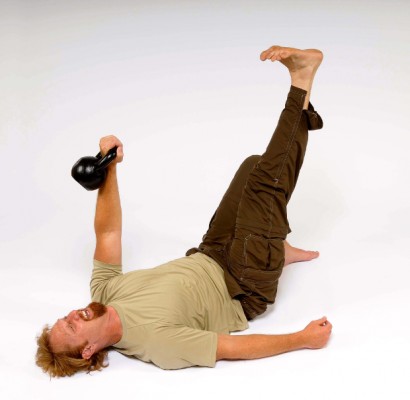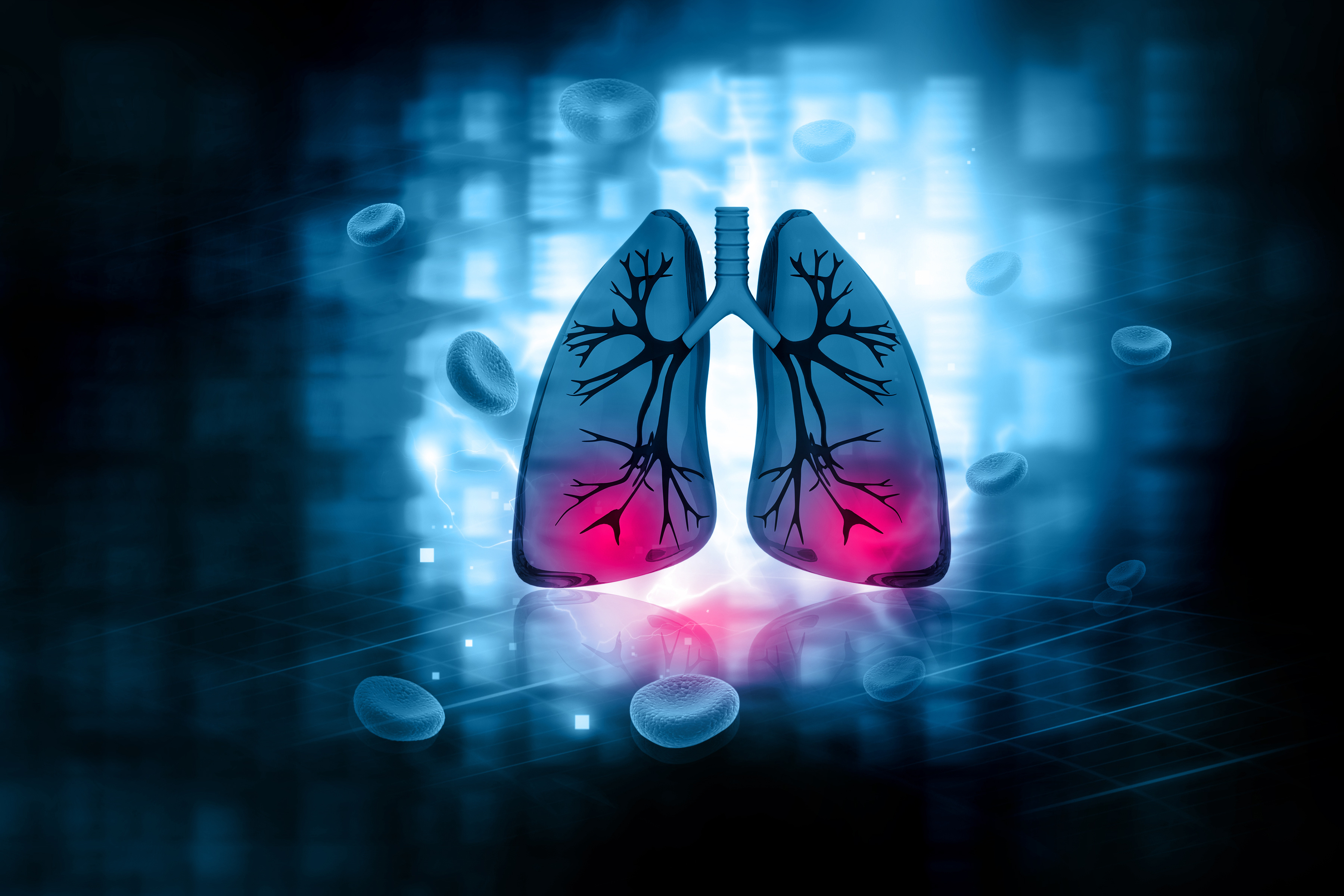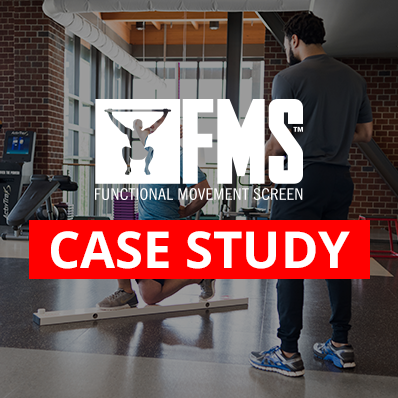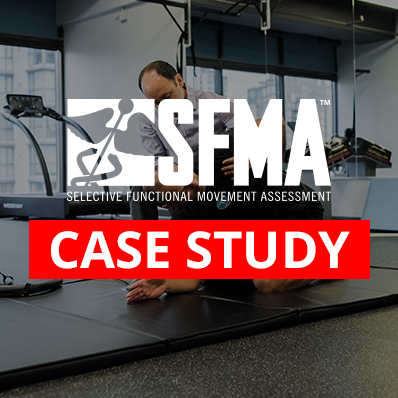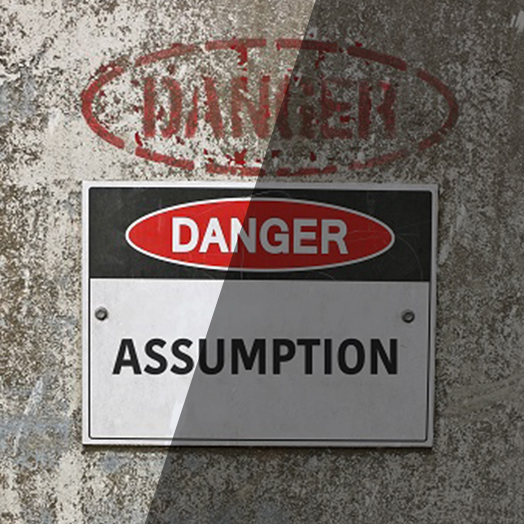Case Study: Regional Interdependence in Action
Written by Greg Dea Case Study
In December, I met one of the smartest people I never knew existed. In his lecture, he mentioned that we are “agents of change – when we change one thing, you change everything.” He later clarified that we do that by changing “the one next thing they are willing and ready to change. It gives you a shot at the next thing.” What this coach was talking about is similar to the concept of regional interdependence, where seemingly unrelated impairments distant from the area of interest may be related. On the same morning, while I sat listening to his lecture in Brazil at a performance summit, I received a text message from a client. The outcome, from one consultation and intervention using the system we teach at SFMA, demonstrates the regional interdependence between their respiratory, musculoskeletal and medical systems.
Here’s the gist. This client had been referred to me and had become sick approximately 18 months earlier. They had intermittent crippling abdominal pain, exhaustion, daily diarrhea and had lost a large amount of weight. They were woken each morning in the early hours by diarrhea, struggling to return to sleep. They had been through extensive medical testing over this period, cleared of cancer, but no diagnosis was provided. They tried dietary changes and had undergone food allergy testing, still seeing no change in symptoms. They tried a large number of medications for pain and digestive symptoms, to no avail.
I saw this client once and did a full you-know-what – history, neuro screen, respiratory screen, and SFMA. Here’s the summary – their neuro screen was normal. They were below minimums on the TLC and FRC of the respiratory screen and had mobility dysfunctions all over. They did not have pain with any movement. With so many movement dysfunctions, respiratory dysfunction and their medical history, I checked their abdomen and could find no visceral restrictions or pain.
So, I suggested to them we begin working on respiratory exercises and thorax mobility for one reason – the assessment told me they could do with improvement and if it made no difference to their as-yet undiagnosed medical condition, at least their nervous system would be more responsive to what they had to deal with.
I did appropriate manual therapy and demonstrated improvements to their thorax mobility. I took them through timed respiratory exercises I refer to as box breathing, with timed breath holds at 50% of their total lung capacity test result. They would inhale for 3 seconds, hold for 3 seconds, exhale for 3 seconds, then hold again for 3 seconds. They would do 10 repeats of this followed by a breath hold of 50% TLC. Then they would repeat the 3/3/3/3 cycle for 9 reps and a 50% TLC hold. Followed by 8 reps, 7 reps, etc., down to 2 and a final breath hold at TLC. After this block, their TLC improved by 50% duration.
Since seeing my client, I’ve been using the following trunk combined movements and reassessing thoracic mobility. It seems to work better and permits more error in the technical execution, so if I had to choose one, I’d swap out the thoracic rotation + side flexion drill for this 3-dimensional trunk series. To set up, place the right hand on the wall with elbow close to the ribs, then turn left. This creates a small amount of right trunk rotation. Then place the left hand on the wall, above the right hand, by taking the left upper limb into as much abduction/flexion as possible, reaching over the head and across to the wall (see video). This creates general trunk lateral flexion to the same side as the rotation – right side. Then, once in that position, perform active movement in three planes. I choose 5 reps because this appears to be an effective minimum dosage. The three movement planes are:
- Actively push your hips/pelvis away from the wall and back into the wall. This creates more side flexion of the trunk.
- Actively push your hips/pelvis forwards and backwards, like a hip thrust and hip hinge. This creates some more trunk flexion and extension.
-
Take your right hand off the wall and reach forward and up to the roof, then down and back to the wall behind you. This creates some more rotation in both directions.
Additionally, I sent them home with a reinforcing thorax mobility exercise.
I contacted them the following day. They reported that they woke again with diarrhea but was beginning to feel a change for the better. They reached out to me on day 7 and reported this:
“Hi Greg
Hope all is going well for you. Everything is fine with me - no pain at all for 7 days, no pain meds, no other symptoms - absolutely amazing. Sleeping well, eating better.
Doing box breathing and T rotation exs regularly - TLC this morning was 43
It’s great doing normal things like going to the beach, swimming, lying in the sun, eating and enjoying my food (was given a week off FODMAP and back onto GF) and fooling around with the boys (12 and 8).
All this is thanks to you!!
Best regards”
An amazing outcome driven by following the system, demonstrating regional interdependence between respiratory, musculoskeletal and medical systems. One of my colleagues, fellow FMS/SFMA instructor, Stuart Elwell put it nicely: “the power of correcting primitive drivers for systemic inflammatory responses is huge. Particularly key how relevant the breath is when physios outside the system are (or have been) deep in the trenches trying complex fixes or extensive testing when the answers are (excuse the pun), right under their noses.”
The coach I mentioned in the beginning – he spoke of the highways in our body that affect our software and hardware. The highways are like the battery that supplies our energy – the circulatory, respiratory, endocrine systems. Within the circulatory system is, of course, the lymphatic system. Together, the battery, among other functions, works to transport nutrients, fuel, waste dispose and waste recycling. It also works to assist our immune system through transporting immune cells and targeted cells for removal. While there are “endless recipes” about what our bodies can do, there are “key ingredients”, and common to all the ingredients that serve our health is movement. Lucky for me, and for my client, I had a system to assess whether they had healthy movement in their respiratory system and musculoskeletal systems. They did not. In the hierarchy of importance, health is before function, so I addressed their respiratory health, the health of one system in their “highways”, complemented by an intervention in their musculoskeletal health. Given a few days for their body to take these improvements onboard, it appears this improvement supported the other components of their “highways” and their symptoms abolished. I’ve been asked what I would do next for them. The answer is easy – it depends what they wants. They wanted to know if there was anything I understood and could change to ease or abolish their pain. That occurred. Being free of pain, if they then wanted assistance to plan a change to her exercise plan, I would screen using the FMS and identify those patterns that were below competent, then apply strategies to bring them up to competent. At the same time, I would protect against loading those patterns that were not competent. Complex to simple, systematically.
Interested in learning more about regional interdependence and how it applies to the SFMA? Join us for an upcoming course!
Author
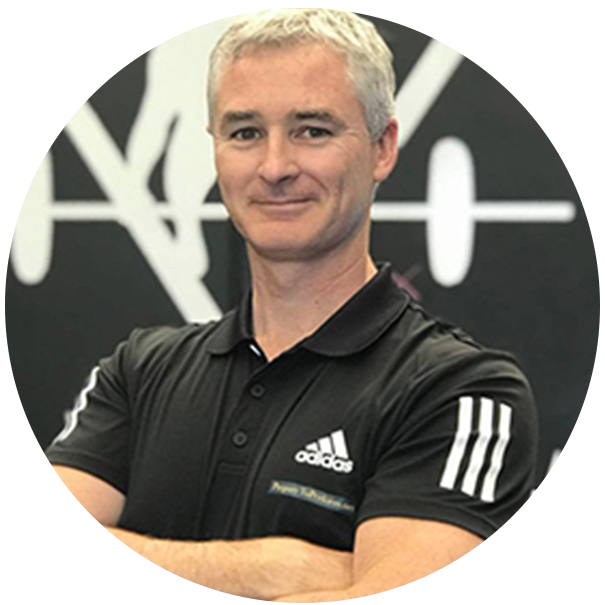
Greg is a Performance Sports Physiotherapist, with multiple Olympic medalists and world champion athletes among his clientele. He is based out of the Mornington Peninsula in the south east of Melbourne, Australia. He regularly works in professional sports in China and teaches in five countries. He has been a titled Sports Physiotherapist for 10 years and a practicing Physiotherapist since 1999. He has lived in five countries, studied and worked in eight, and travelled to over thirty to learn what the best practitioners and coaches do, systematically, in the toughest athletic environments.




